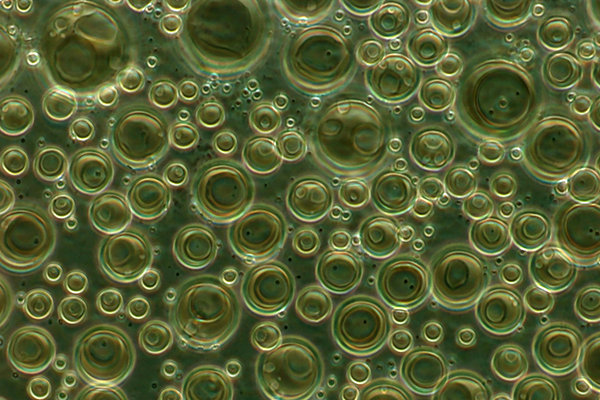If you take dietary supplements for health or other reasons, you’re probably already aware of the limitations of many supplements.
Oftentimes, promising supplements turn out to deliver disappointing results. Early in vitro cell study results that suggest health benefits often fail to pan out later during in vivo animal or human clinical trials.
For example, while antioxidant supplements show remarkable results in cell studies, many of them have failed to deliver measurable benefits in human trials. (1)
Common reasons supplements don’t work as expected include (2)(3):
-
- poor oral absorption
- breakdown by stomach acid or the liver’s metabolism
- a lack of cellular uptake
One high-tech solution to these conundrums is called liposomal encapsulation technology, a process of encasing small molecules (such as supplements) in a special layer of fat or lipids.
This technology could revolutionize dietary supplements in several exciting ways(3)(4):
- Liposomal technology may allow supplements that didn’t work at all in the past due to low bioavailability or other problems to actually become effective when taken orally.
- Supplements that already “work” but have limited efficacy could become far more effective with liposomal delivery systems.
- Liposomes allow for controlled release: they can help deliver active ingredients (including antioxidants or essential nutrients) to the “right place” at the “right time” to be as effective as possible in supporting your health.
- Liposomes enhance stability, allowing supplements or other substances to last longer with less concern for breakdown during shipping or storage.
- Compared to conventional supplements, liposomal supplements are more cost effective because they work better with lower levels of active ingredients.
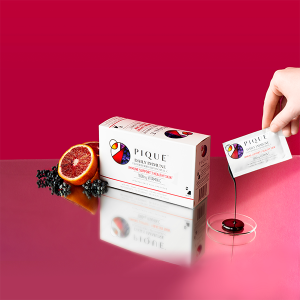
Pique Daily Immune
Elderberry superfood complex meets cutting-edge liposomal encapsulation and sodium ascorbate Vitamin C.
Keep reading for a crash course in liposomes, how they work, and the ways they’re already changing the science of supplements.
What Are Liposomes?
At a very basic level, you can think of a liposome as a microscopic round ball with an outer fatty layer that encloses a solution (most often watery, or aqueous) on the inside.
The solution inside contains an active ingredient (such as a supplement, nutrient, or other bioactive substance), while the fatty layer stabilizes and protects it.
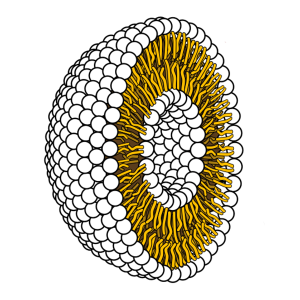
Cross-section illustration of 3D liposome structure. The active ingredient goes inside the innermost sphere area.
Normally, oil and water repel each other and form two separate layers when mixed together, as you’ve probably noticed many times in the kitchen.
But because of their special properties, liposomes also allow water-soluble compounds (like many supplements) to absorb into otherwise inaccessible fatty areas, such as the membranes of cells in your body. (5)
The outer fatty wall portions of liposomes are made up of phospholipids, which are a unique type of fat molecule that contains a phosphate “head” and two fatty acid “tails.”
Phospholipids are special because the phosphate side of the molecule is attracted to water (hydrophilic), while the fatty acid side is attracted to fat (lipophilic).
The wall structures of liposomes are arranged as phospholipid bilayer structures, meaning that the phosphate “heads” of phospholipids face both ways (inward and outward).
Look closely at the image below and you can see the green (head) portion exists on the inside and outside of the liposome:
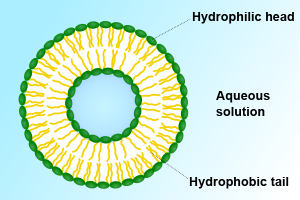
These uncommon properties enable liposomes to behave very differently from either oily or watery substances.
Essentially, they protect active ingredients during digestion, then allow them to absorb into areas they wouldn’t normally be able to access due to a lack of solubility.
Unlike most substances, liposome formulations can be digested and absorbed with minimal breakdown, then absorb deep into cells. (4)(5)
They were first invented in the early 1960s by hematologist Alec D. Bangham, but have gained momentum in recent decades as researchers discover breakthrough uses for liposome technology. (3)
It’s likely the resemblance of liposomes to cell walls that accounts for the incredible effectiveness of liposomal encapsulation. The lipid bilayer may allow liposomes to temporarily merge with cell membranes, then transfer the inner contents directly into the cell. (5)
We’ll cover the exciting real-world applications of liposomal delivery in a moment, but first, a primer on how liposomal formulations are manufactured.
How Are Liposomes Made?
Unlike the random mixtures of oil and water you’ve observed in your pots, pans, or sink, liposomes rarely form by accident.
They’re highly structured, and potentially infinite variations of liposomes could be created. However, the science of making liposomes is incredibly precise.
Scientists begin by considering the substance or nutrient to be encapsulated, its intended use, and the area of the body and target cells where it is expected to end up.
For example, for oral supplement use, research suggests that liposomal nanoparticles with a particle size of 1 μm (1 micron, or a thousandth of a millimeter) or smaller are best for absorbing through the intestinal wall and entering blood circulation. (4)
After determining the parameters, manufacturers put the active substance and a phospholipid (such as lecithin or phosphatidylcholine, both of which can be isolated from eggs or soy) together in water, which acts as a solvent to dissolve the main ingredient.
What happens next depends on the substance and its intended use, but the final step always involves the application of force (energy) to the mixture for activation and incorporation into liposomes. (3)
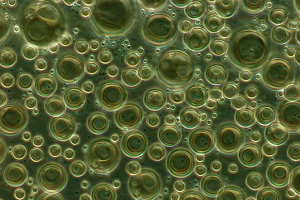
Manufacturers use sound waves (sonication), pressure, spray drying or chilling, centrifuging, or other exotic methods like electrostatic to ensure the water-based solution ends up inside of fatty liposomes, and that the liposome size and structure are correct for their intended use. (4)
The end result is that the active ingredient is encapsulated in protective, three-dimensional “bubbles” of special fats that are attracted to both water and fats.
The Science of Liposomal Supplement Delivery
Now that you know the basics of liposomes and how they’re made, it’s time for a closer look at the applications of liposomes as a delivery system for dietary supplements.
Here’s how liposomal encapsulation can enhance the effectiveness of antioxidants, nutrients, or other oral supplements:
- Preventing breakdown due to stomach acid during digestion. (4)
- Increasing absorption or permeability through the intestinal wall. (4)
- Bypassing or reducing breakdown during the liver’s first pass metabolism. (6)
- Ensuring a supplement reaches the target area without reacting with other substances that could reduce effectiveness (such as foods or other supplements or nutrients). (7)
- Enhancing uptake into cells (intracellular delivery) through the cell membrane. (5)
The upshot is that liposomes can make virtually any supplement work better.
This includes supplements that didn’t work at all previously due to absorption or other issues, but they can also help already-effective supplements become even more effective.
Below, we’ll cover some exciting study findings that illustrate how liposomes can enhance the benefits of supplementation, or, in some cases, allow supplements to work that were previously ineffective.
Liposomal Vitamin C (Ascorbic Acid)
Vitamin C or ascorbic acid is a powerful and effective antioxidant that can help support cellular health, but there’s a problem.
The rate of absorption of vitamin C through the intestinal wall may limit its effectiveness when taken orally. (8)
According to a 2018 scientific paper, if you exceed a daily dose of 200 milligrams of vitamin C, it becomes difficult to further increase the plasma concentrations of vitamin C. (9)
In other words, no matter how much of a regular vitamin C supplement you take, you might as well only be taking 200 milligrams per day!
While low daily doses of vitamin C still show some general health benefits, higher doses have the potential to offer more powerful benefits, particularly for supporting cellular health–but only if your body is able to absorb them. (10)
One study found that a liposomal formulation of vitamin C could solve the low absorption problem of conventional oral vitamin C. (10)
As the researchers wrote, “Since a single oral dose [of liposomal vitamin C] can produce plasma levels in excess of 400 µm [per liter], pharmacokinetic theory suggests that repeated doses could sustain levels well above [181%] the formerly assumed maximum [indefinitely].” (10)
Similarly, a 2020 study of liposomal vitamin C supplements concluded that bioavailability was 1.77 times greater compared to conventional ascorbic acid. (11)
In other words, human evidence shows that liposomal technology can elevate ascorbic acid levels far above previous limits (and keep them there!), unlocking benefits that were unattainable with oral dosing until now.
Liposomal Phytochemical Antioxidants
Phytochemical antioxidants are powerful natural antioxidants found in many different plants.
Scientists think phytochemicals are likely responsible for many of the health benefits of eating a healthy, plant-based diet. (12)
Unlike ascorbic acid, phytochemicals aren’t essential nutrients, but they do show promising health results in cell studies. (13)
However, phytochemical supplements have two significant problems: they degrade quickly and absorb poorly, especially in isolated forms. (13)
Fortunately, promising clinical trials are currently underway for liposomal formulations of lutein, lycopene, beta-carotene, resveratrol, quercetin, and other plant antioxidants. (13)
With liposomal delivery systems, manufacturers can not only increase the stability and absorption of phytochemicals, but also create time-release formulations, target specific cells, or prevent unwanted side effects.
As a result, liposomal technology is likely to allow results with phytochemical supplements that were previously impossible–not due to a lack of effectiveness of the antioxidants themselves, but because of inadequate delivery systems.
Final Thoughts
High-quality liposomal formulations have the potential to change the supplement industry forever.
By increasing absorption and bioavailability and reducing breakdown, liposomes can help bridge the gap between cell studies and real-world results for nearly any supplement.

Pique Daily Immune
Elderberry superfood complex meets cutting-edge liposomal encapsulation and sodium ascorbate Vitamin C.
